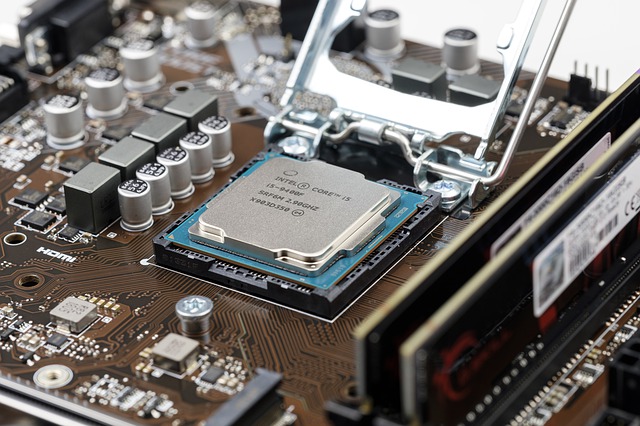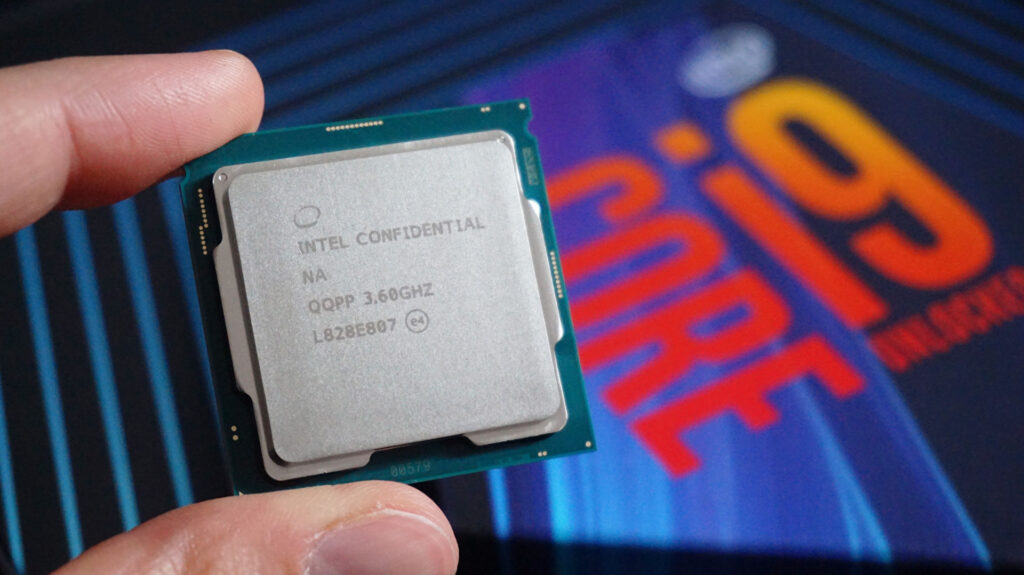Video Editing – One of the most popular things you can do on a m PC or laptop.
No wonder so many people are looking for the perfect motherboard for their video editing needs. A specialized motherboard optimized for video editing can save you time, a lot of frustration, and in the long run, a lot of money .
In the old days, the only way to edit your video was with huge, heavy, and unbelievably expensive cutting machines . You needed a team to run all the video editing machines.
With modern PCs, digital video, and the speed at which motherboard technology is changing , anyone can become a video editor, at least from a technological standpoint.
It doesn’t matter if you’re editing your birthday video, some background material for a local organization, an ad for a big new brand-new washing machine, or you’re editing huge movie productions.There is a motherboard and very specific equipment for everyone and for all budgets.
The same goes for video editing software. It doesn’t matter whether you are using Windows Movie Maker, Sony Vegas, Adobe Premiere Pro, Avid, Davinci Resolve or any other video editing app among the millions of available apps.
TOP 4 BEST MOTHERBOARD FOR EDITING VIDEOS & PHOTOS
Below we have shared some of best motherboard for video editing and photo designing which are high in performance.
ASUS ROG Maximus XII Hero Motherboard
About this item
- Intel LGA 1200 socket: Designed to unleash the maximum performance of 10th Gen Intel Core processors
- Robust Power Solution: 14+2 power stages with ProCool II power connector, high-quality alloy chokes and durable capacitors to provide reliable power even when push the CPU performance to the limit
- Optimized Thermal Design: Except comprehensive heatsink, heatpipe and fan headers, features low-noise AI cooling to balance thermals and acoustics by reducing fan speeds and maintaining a 5 Celsius delta
- Fastest Gaming Connectivity: Dual Ethernet with 5Gb and gigabit Ethernet , LANGaurd, dual M. 2, USB 3. 2 Gen 2, and Intel WiFi 6 AX201 (802. 11 ax)
- Industry-leading Gaming Audio: High fidelity audio with the SupremeFX S1220A codec, DTS Sound Unbound and Sonic Studio III draws you deeper into the game action
- Unmatched Personalization: ASUS-exclusive Aura Sync RGB lighting, including RGB headers and Gen 2 addressable headers
- DIY Friendly Design: Pre-mounted I/O shield, BIOS Flashback, Q-Code and FlexKey
MSI MEG Z490 GODLIKE Gaming Motherboard
About this item
- Supports 10th Generation Intel Core / Pentium Gold / Celeron Processors for LGA 1200 socket
- Supports dual channel DDR4 memory up to 128GB total (5000MHz)
- Triple Turbo M.2 with double-side M.2 Shield Frozr – transfer speeds of up to 32 GB/s bandwidth, with M.2 XPANDER-Z GEN4 S accessory card adds two additional M.2 slots
- 2x Thunderbolt 3 ports on the rear panel provide up to 40GB/s transfer speed. Supports daisy chain configurations and 4K displays.
- On-board 10G super LAN plus 2.5G LAN with Wi-Fi 6 (802.11ax)
- Frozr Heatsink designed with active cooling, Double Ball Bearings, Zero Frozr Technology, and MOSFET Backplates for high-performance heat dissipation.
Reference Link: Msi.com
GIGABYTE Z490 UD Motherboard
About this item
- Supports 10th Gen Intel Core processors
- Direct 11+1 Phase Digital VRMs with DrMOS Stages
- Extended MOS Heatsink VRM Cooling
- Dual Channel Non-ECC Unbuffered DDR4, 4 DIMMs
- Realtek GbE LAN
- 2x M.2 slots
- AMP-UP AUDIO ALC887 Audio DAC
ASUS ROG Strix B550-F Motherboard
About this item
- Cutting edge gaming motherboard: with AMD AM4 socket, it is a perfect pairing for Zen 3 Ryzen 5000 & 3rd Gen AMD Ryzen CPUs
- Faster memory: 4 memory slots support dual channel DDR4 memory up to 128 GB, with ASUS OptiMem enabling higher memory frequencies and lower latencies
- Blazing data transmission speeds: Two M.2 slots, including the latest PCIe 4.0, provide maximum storage flexibility and the fastest data speeds available via the 3rd Gen AMD Ryzen platform
- High-performance gaming networking: Onboard WiFi 6 (802.11ax) and 2.5 Gb Ethernet for exceptionally fast and smooth online gaming experiences
- Optimized thermal solution: Customizable fanless VRM and chipset heatsinks with ASUS Stack Cool 3+ design keep your system running reliably
- Please ensure your BIOS is up to date if installing a compatible Ryzen 5000 series CPU. Visit ASUS site search by motherboard model name, click on “Support” tab, Drivers and Tools, then BIOS & Firmware to download the latest BIOS
It all works on a motherboard.
And let me tell you this: The best PCs for video editing aren’t that expensive anymore.
Not for professionals – because they make their money with it, and a good motherboard is worth every penny – and not for video editing enthusiasts, because a motherboard on which you can edit smartphone video really doesn’t have to be expensive.
This article is structured into several main parts, and you can jump to any of them with the following links:
How does video editing use your motherboard hardware?
If we are to build the best motherboard for video editing, the first step is to analyze which hardware your video editing software uses the most and how.
Now, there are so many video editing apps on the market, but I’ll focus on one of them for now:
Adobe Premiere Pro .
This is a very popular video editing software that many professionals and amateurs use and is perfect for our analysis as there are many other video editing apps that use the hardware in a very similar way .
Let’s take a look at how I would edit a video myself in Premiere Pro, and we can go from there and take a closer look at what those steps involve, from a hardware perspective.
My typical video editing process:
- Load sequences into my project
- Create sequences and sample shots using these images.
- Play – Go back on my timeline a lot of times, to be able to edit
- Add transitions, effects, titles
- Add sound effects and music
- Render my timeline
This is a very rough flow of the basic steps of a video editor in a typical day, nothing too complicated.
If you think about it, video editing, from a hardware perspective is something that can be broken down into a few simple steps :
- The software reads the data (footage) from your storage media.
- Your editing software must decode these sequences.
- The software then manipulates these sequences based on the effects and colorimetry you are using (if applicable).
- These manipulated sequences are then usually stored in random access memory (RAM), which allows you to have a real-time experience while playing the timeline.
When rendering your final project, the only thing you add to this chain is:
5. Encode the timeline in the codec of your choice.
6. Save the encoded data to the storage medium.
It is these 6 simple steps, which we will need to optimize as much as possible to build our best motherboard for video editing.
Let’s take a look at them one by one to see which hardware part is responsible for the performance of each:
Video playback
It’s an easy question: Your storage device and the transfer stream are responsible for how quickly your footage can be played back on storage media.
There are three popular types of storage you can choose from these days:
The hard disk (HDD)
The hard drive is the slowest of the three options. Sequential read speeds are generally on the order of 150Mbyte / s.
Hard drives have a great Cost / GB ratio , but they rank last in speed.
Hard drives are great for archiving and backing up large data , which doesn’t need to be accessible all the time, but I wouldn’t recommend using a hard drive as an active working device for your footage.
Good hard drives can usually be found at Seagate or Western Digital, like the Seagate Barracuda series or the Western Digital Blue or Red series.
You can get hard drives up to 14TB, although the best price / GB ratio is around 8TB.
The next is the Solid State Drive (SSD)

A SATA (Solid State Drive) is generally 4 times faster than an HDD and considerably speeds up your video playback. SSDs are no longer very expensive and prices are dropping quite quickly.
I recommend getting at least an SSD as an active storage medium.
The Samsung 860 EVO or PRO , which come reasonably priced in sizes from 256GB to 4TB is a large SSD with high end performance.
Finding the best motherboard is an operation that takes preparation and analysis. However, it is not always easy to put together all the elements necessary for the relevance of the comparison.
So take this comparison with you to get an objective opinion on the matter and to make the best decision.
Motherboard Features for Video Editing
Generally, the faster and more powerful the features of a video editing motherboard, the better quality output you will get. Let’s take a closer look at the basics.
1. Processor. Your motherboard’s processor frequency (or clock speed) affects your ability to work with your content. The higher the frequency, the faster your performance for running creative applications and editing project files. The more complex the editing project, the more processing power you will need; especially if you are editing extremely large files of 4K video images.
If you need to color correct, work in layers, add special effects, transfer graphics, or add transitions, having a high-performance processor is essential.
Video project files need to be processed between each edit pass. For example, you put your raw images together and then process your project.
Then you add the graphics layer and rework your project. You can go over it a third time to correct the color and then work again. The processor’s core count affects your motherboard’s ability to process files and export final content. The more cores, the faster the performance for these tasks.
2. Display card. The graphics processing capabilities of your motherboard play a critical role in video editing. An integrated graphics card provides an accurate color gamut for high resolution display features and color correction.
Thanks to its high performance suitable for multiple monitors, you can keep your active project flow open on one screen, and use the other screen for easy access to folders containing clips and other files.
3. Memory. While your deadline is under pressure, your motherboard’s memory (or RAM capacity) allows you to work faster, process huge files and deliver high-quality results.
Memory is different from the storage space in which you save the files. Your motherboard may have a large storage capacity, but if there is not enough memory, creative applications can stop working. Memory is even more important if you use multiple creative software programs at the same time.
4. View. From posting social media clips to filming professional documentaries, seeing the right colors in every application is critical for video editing.
You should have a motherboard screen with a high enough resolution that matches your camera’s video images. Standard high definition (HD) videos have a resolution of 1920×1080, 4K videos have four times the pixel resolution (3840×2160).
5. Storage performance and capacity. Video production creates many large files. Raw video footage gets even bigger when you add effects, graphic layers, and sound.
You need a reliable mass storage as well as a high performance storage solution for your work files.
Storage drives fall into two categories. Hard disk drives (HDDs) contain arms with multiple “headers” that read and write data on spinning disks.
Solid state drives (SSDs), on the other hand, have no moving parts. It drastically reduces the time to access your files as you don’t have to wait for the disk plate to spin. You can quickly browse through raw images and edit huge files directly on the drive.
6. I / O ports and connectivity features. Video editing process; It requires high-performance ports for your monitors, external storage, speakers and other peripherals to power your creativity.
Connection speed is also important. Motherboards with 10 Gigabit Ethernet (10GbE) ports allow you to effortlessly transfer huge video files from your motherboard to your storage drives.
Wi-Fi 6 enabled motherboards allow you to upload video files quickly and securely to the cloud.






